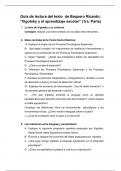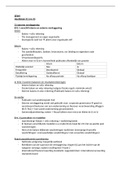Samenvatting
Compact summary for Biomedical Sciences and Society
- Instelling
- Vrije Universiteit Amsterdam (VU)
This document includes a compact summary used to remember all important subjects and articles that have been given throughout the course Biomedical Sciences and Society. The last part of the summary also consists of a whole prepared essay as an example for the exam since we also had to write an ess...
[Meer zien]













